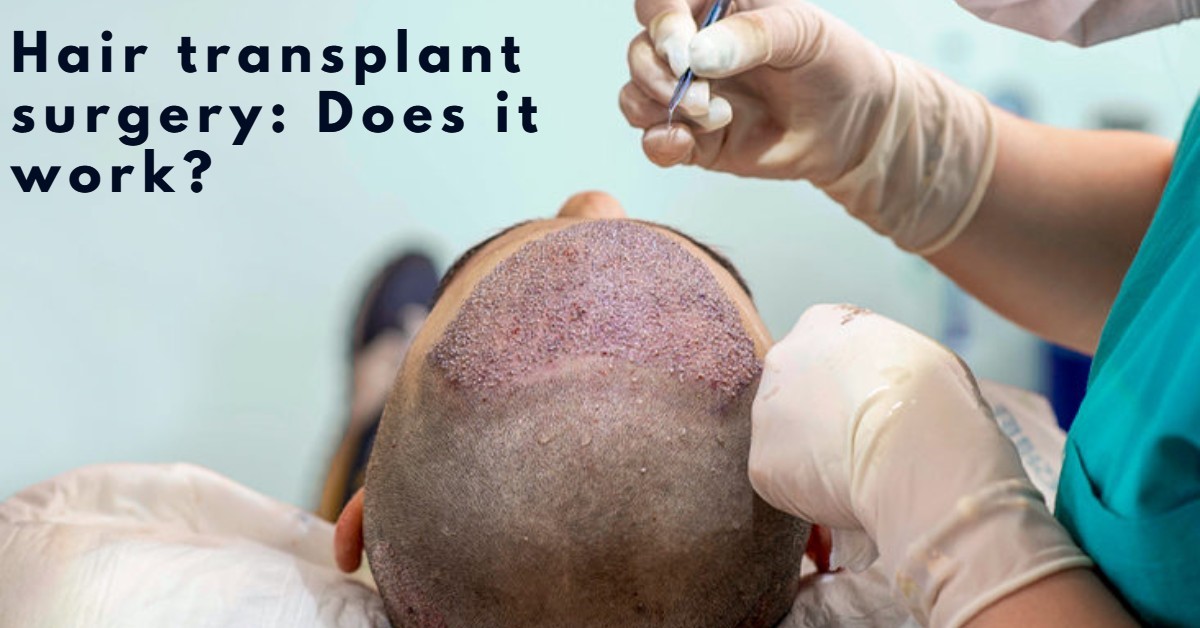Hair transplant surgery is one of the hair loss treatment conditions where dermatologists harvest the hair follicles from other body parts and plant them at the affected scalp. The region where hair is taken from is usually known as the donor, while the party receiving the hair or where the transplant takes place is the recipient. The hair transplant cost depends on the number of hair follicles to be planted.
Hair transplant surgery can record permanent and more appealing results after four to six months than other drugs, giving quick results. Though the transplanted hair may thin with time, they usually grow fully up to the estimated length.
Before choosing hair transplant surgery, many people ask themselves questions such as does hair transplant work? The hair transplant cost, effects, etc. Don’t worry, and this article will answer all your questions on hair transplant surgery?
Does hair transplant work?
Doctors advise that a hair transplant is a better option for hair loss treatment than other drugs, although it does not work for all people. You should know that this procedure is effective for hair restoration depending on the density or the thickness of the patient’s donor, the skills and ability of the dermatologist to operate.
Recent studies show that hair transplant surgery results in hair fullness, especially at the scalp region, which is why it is commonly used to treat both females and males baldness. Moreover, one can use the hair transplant alongside other treatments like Platelet Rich Plasma or Minoxidil drug for faster and better results.
Hair transplant procedure does not work in people who;
i) Experience hair loss as a result of medications or chemotherapy.
ii) Have scars on the scalp due to some injuries.
iii) Experience widespread bald patches and hair thinning.
After hair transplantation, the shedding or thinning of hair may occur in the future though hair fully grows within four to six months.
How hair transplant works
Hair transplant surgeons usually do the surgery in two main stages.
1. Follicular unit extraction (FUE)
The method of using Follicular unit extraction involves;
a) Shaving hair from the back of the patient’s head or other body parts.
b) Taking the hair follicles out of the skin scalp leaving some patches where the follicles came from
c) Grafting the hair follicle into the holes the surgeon has made.
d) Covering the transplanted area with a bandage.
2. Follicular unit transplantation (FUT)
The surgeons use the following method in performing this surgery.
a) The surgeon removes the piece of the scalp strip from the back of the head using a scalpel.
b) They then take stitches and use them to cover the region they took the scalp from.
c) The surgeon then divides the scalp strip into smaller parts that contain hair grafts using a scalpel.
d) They make holes using a blade at the affected area to be transplanted.
e) Hair is then inserted into the holes through a process known as grafting.
f) Then, surgeons use the bandage to cover the treated area.
Using this procedure results from the color and quality of the patient’s hair, the type of hair, and the size of the area where transplantation took place.
Hair transplant cost
A hair transplant cost depends on the clinic you attend, i.e., various clinics may have different prices, the transplant procedure extent, experience of the surgeon, and the procedure you choose, whether FUE or FUT.
Generally, hair transplant costs can range between $ 4,000 to $ 15,000 across the world. Many clinics regard hair transplant procedures as cosmetic treatment hence do not allow payments using insurance health cards.
Side effects of hair transplant
Hair transplant causes swelling and pain in the affected area in some people. You should feel free to ask your doctor for some pain reliever drugs to help you overcome the pain. The swelling of the face and the affected area is also joint when the skin starts healing.
Hair transplant can also lead to bleeding at the surgery site. The bleeding may be severe since the procedure involves making minor cuts and holes for the follicles to be planted. It can also lead to some infections due to too much bleeding. The surgeon may stop the bleeding using some drugs.
A hair transplant can make you have a mild or severe headache that goes away with time. However, if the headache exceeds your standard expectation or is advised by the doctor, you should contact him/ her for further treatment.
Hair transplant leads to scars at the area where the follicles are removed and the place they are planted. The wounds may or may not be visible depending on the procedure the surgeon used. Usually, the Follicular unit transplant method leads to more scars than the follicular unit extraction procedure. However, the wounds may disappear when the hair continues to grow.
Conclusion
Hair transplant surgery can be a permanent solution for hair loss treatment, although it does not prevent hair loss in the future. If you want to use this procedure, consider asking for the hair transplant cost in different clinics with experienced or skilled surgeons.
Author Bio:
Naman Modi is a Professional Blogger, SEO Expert & Guest blogger at beverlyhillshr.com, He is an Award-Winning Freelancer & Web Entrepreneur helping new entrepreneur’s launches their first successful online business.
